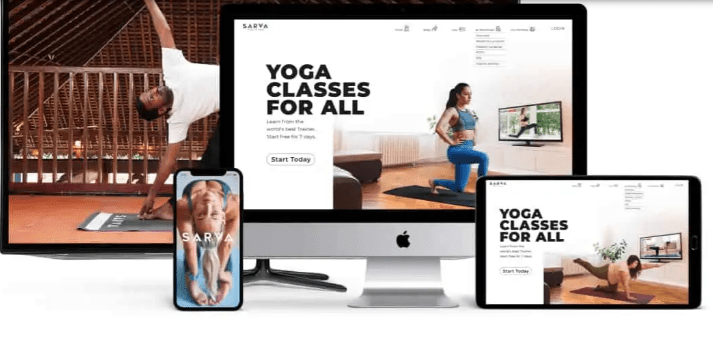Contents
- 1 Workplace Wellness Programs With Remote Workers
- 2 Strategies For Successful Wellness Program With Remote Workers
- 2.1 Keep Team Members Informed
- 2.2 Hold Virtual Meetings
- 2.3 Create a Work-Life Balance
- 2.4 Encourage People to Be Active Wisely
- 2.5 Create Positive Work Culture
- 2.6 Offer Flexible Job Schedules
- 2.7 Provide Tools and Training
- 2.8 Offer Mental Health Services
- 2.9 Provide Flexibility in Wellness Programs
- 2.10 Use Web-Based Wellness Platform
- 2.11 Provide Training
- 3 Benefits of Wellness Program For Remote Workers
- 4 A Word From Mantra Care
Workplace Wellness Programs With Remote Workers

Remote work is becoming more and more popular as technology advances. As a result, many workers now have the option to work from home. They can even work from other locations outside of the office. This change has created some unique challenges. It is for companies that want their employees to be healthy and happy. It’s estimated that by 2020, over 40% of the workforce will be employed remotely. This trend is projected to continue and grow even larger in the future. For example, a recent study found that 43% of employees currently work remotely for at least some of their time at their jobs. Remote working can help employees be more productive. It also helps to have a better work-life balance. There are some strategies for remote workers’ wellness.
However, there are also risks employers need to be aware of. This is if they want to maintain a healthy workforce. One way to do this is through workplace wellness programs with remote workers. A common factor in remote work that requires attention is mental health. It is both in well-being and illness. The rates of mental health problems for remote employees are similar to those in office jobs. But these conditions often go undiagnosed. This is because the employee cannot receive help from a co-worker or supervisor easily from home.
In many cases, it’s up to the manager to encourage their team members to take care of themselves. They have to find ways through which they can promote wellness as a company.
Strategies For Successful Wellness Program With Remote Workers

These are the strategies that will help employers keep productivity high. It is while creating a healthier environment for everyone involved.
Keep Team Members Informed
This is one of the strategies for remote workers’ wellness. Every worker needs must have the tools to do their job well. It’s also important that they have access to information. It is so they understand how their work fits into the overall mission of your organization. This could mean communicating more often via phone or video conferences, email, instant messaging, or newsletters.
Having regular communication with team members will help them feel like they are part of the bigger picture. It gives them the motivation to continue working for your organization. It’s also important that you keep all information about wellness readily available (including employee counseling services). It should be in one place such as an internet site. It is where employees can easily access it from any location. This way workers won’t have to hunt through several different channels every time they want to find out something related to their health.
Hold Virtual Meetings

Regular meetings face-to-face (F2F) between colleagues are a good way for people to connect. It can form bonds even when they are not near each other. If you can’t bring your team together for these meetings, then you should host virtual ones instead. Not only will this help keep people engaged and on track with what needs to be done. This will also allow them to connect better- even if they’ve never met in person. This will help the organization stay cohesive and keep team members engaged in working toward a common goal.
Create a Work-Life Balance

With remote work, it’s easy for employees to spend more time at their job than they do at home. This is because they have fewer outside interruptions. It’s important for managers to encourage their team members to create a healthy balance between their personal and professional lives. This doesn’t mean dropping all responsibilities while you’re on vacation or leaving the office at 5 p.m. It means that everyone should take time away from work every week. It is where they don’t think about anything related to work (e.g., no calls, meetings, or checking email). Life is too short not to live it.
Encourage People to Be Active Wisely
This is one of the strategies for remote workers’ wellness. The sedentary nature of working at a computer all day is one of the major health risks associated with remote work. Not only can it lead to weight gain, but it can also increase the risk for chronic diseases. These diseases are such as cardiovascular disease, type 2 diabetes, and colon cancer. Managers can encourage their team members to be more active. This is by encouraging them to move around throughout the day. You could allow workers to choose which type of exercise they’d like to do. These exercises are yoga, Pilates, strength training, set up walking meetings. These meetings are where everyone walks together during meetings instead of sitting down the entire time. You can also provide equipment that employees need in order to take breaks from sitting.
Create Positive Work Culture

Your employees need to feel like the company values their well-being as much as their professional development. To do this, you must build an environment where employees feel comfortable talking about any issues that arise related to wellness. This could include mental health, workplace stress management, fitness tips or anything else that affects your workers’ lives. This can be both inside and outside of the office. Also, remember that remote work can exacerbate workplace stress. Because of this, you’ll need to be even more attentive than usual.
Offer Flexible Job Schedules

This is one of the strategies for remote workers’ wellness. Remote work can create a sense of isolation. It is if employees feel like they are not part of the office culture or company vision. One solution is to allow certain staff members to work flexible hours or job shares that fit their lifestyle better. You could also host social events for your team to get together and enjoy each other’s company in real life. This can also be done virtually through communication tools. If workers know there is always something fun going on with their colleagues, they will feel less isolated. They will also feel more supported outside of work.
Provide Tools and Training
Your virtual workforce needs access to communication tools. These tools are such as video conferencing, instant messaging, social media platforms, and email. This way workers can interact with clients, manage projects or just check in on their team members. You’ll also want to give your employees access to wellness tools. They can use these to help find better ways of coping with challenges. These can be at work or outside of it.
Offer Mental Health Services
It’s important for managers to encourage an environment. This is where employees feel comfortable reaching out if they are struggling emotionally. If you have a remote workforce you will need to make sure they have access to professional mental health counselors. They will understand the difficulties of working remotely. For example, providers may recommend that patients engage in social activities outside of work. They can even use technology like Skype or Google Hangouts to communicate with therapists.
Provide Flexibility in Wellness Programs
If someone is working remotely, they might not be able to take advantage of some types of wellness programs. For example, if employees need to attend an in-person meeting or conference where learning opportunities are offered then that may not be possible for workers based outside the office. Another possibility is that your wellness programs might have a different focus when it comes to remote workers.
Use Web-Based Wellness Platform

This is one of the strategies for remote workers’ wellness. You can use a web-based wellness platform to help your remote workers. Such a wellness platform brings all forms of communication, collaboration, and knowledge-sharing tools under one roof. It is for better management of health care across the workforce. With the help of such remotely accessible services employees can easily share their health-related information. They can also record it online to either monitor themselves or seek professional advice.
With this web-based approach, you no longer need to schedule face-to-face video conferencing sessions. These were for discussing important matters related to well-being. Rather than arranging multiple gadgets over the conference table, you can use a single computer with a broadband internet connection. It is to communicate amongst yourselves. This can be by means of live chat, live video conferencing, email, SMS, etc from any corner of the world on a true real-time basis saving your precious time and money in the bargain.
Provide Training
Managers will receive regular reports on the progress of each person participating in the workshop. It helps them to make informed decisions. It is about who needs additional training. Participants are rewarded with points that accumulate over time. It is after they complete all levels of a workshop. Leaderboard updates allow managers to track their team’s progress throughout the wellness journey. The more points users accumulate, the higher up they reach on the leaderboard. Participants are also challenged to achieve milestones by the final day of their Wellness Journey. For example, if employees complete all levels of the burnout workshop within 100 days, they will receive a personalized reward at the end of their journey. Additionally, managers can start working toward new wellness goals with their team members. These include setting up regular check-ins for ongoing motivation and support.
Benefits of Wellness Program For Remote Workers
There are benefits of wellness programs for remote workers. Let’s take a look at the potential benefits of using such wellness programs:
- Remote workers can share information or record their activities online.
- It easily saves money and time for remote employees. It is by providing web-based services rather than face-to-face training sessions. These can be held somewhere else.
- Employees get motivated and inspired over the internet to achieve milestones. They can reach higher levels of success in it by achieving targets faster than expected ones. It is with no supervision from the managers or bosses.
- You can avoid spending thousands of money on workshops or training sessions.
- You can be updated with all activities of your employees. It can be right into your hand-held gadget through message alerts, emails, etc without any additional work.
- These programs provide analytics that enables learning about wellness levels. It also gives service utilization and progress tracking and real-time insights. This allows managers (and even employers) to decide what is needed next for their staff members. It is as part of improving the overall well-being of an organization.
- When everyone works together toward common goals, it can create a happier and healthier environment. These remote workers can share ideas across geographical boundaries.
A Word From Mantra Care
Workplace wellness programs are becoming more and more common. The question of how to keep remote workers engaged is still an issue. We’ve brought you some ideas for workplace wellness programs with remote employees in mind. It is so that your team will be healthy, happy, and productive. With these strategies for successful wellness with remote workers, you can improve the physical and mental well-being of your team members. This can save time and money at the same time. A win-win situation all around.
Do you want to keep your employees happy, healthy, and productive? Join our employee assistance program and get a healthier workplace.


